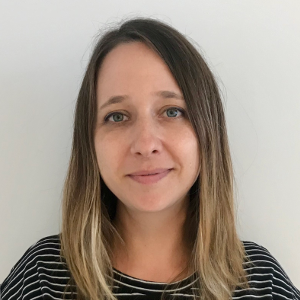
13 Sep Interview with Daniella Beller, Manager, Maccabi Research Institute Biobank

Manager of “Tipa”, the first population based biobank in Israel, within the Maccabi Healthcare Services institute for research and innovation. Leading all biobank related activities since first devised early-2016. Responsible for planning the execution road-map, facilitating the successful biobank launch and continued scaling-up of biobank activities since then. Read her full bio.
Interview with Daniella Beller, Manager, Maccabi Research Institute Biobank
Q: What makes the Maccabi Research Institute biobank unique?
A: To explain the uniqueness of the Maccabi Biobank (named “Tipa” in Hebrew which means “drop” or “just a little”), first you must know a little about Maccabi.
Maccabi Healthcare Services, one of the largest health funds in the world, covers 2.5 million patients, which represents 25% of the Israeli market share with a nationwide representative distribution. In addition to community based healthcare services, Maccabi owns Assuta, the largest private hospital network in Israel with 13 facilities (private and public) across the country. Maccabi’s operating budget is $4 billion (USD) and employs approximately 5,000 physicians.
Maccabi has long been recognized, both in Israel and abroad, as a unique and innovative health care system which leads the way in cutting edge medical technology, comprehensive and integrated computerized information systems, cost effective management, and sophisticated monitoring and evaluation tools.
Since 1993, throughout Maccabi, electronic medical records (EMR’s) have documented complete medical information and data on each patient in a central database. This database provides comprehensive, systematic, quality data, of a stable population of patients across their lifetime (less than 1% of patients leave Maccabi). Maccabi has also formulated automated clinical registries for chronic diseases utilizing the comprehensive data in the EMR’s.
Our newly created biorepository is unique because of the data attached to it, which is collected continuously and for clinical purposes, regardless of the biobank. Because this is a stable population, we have medical history from cradle to grave which is standardized. In addition, our sample collection is continuous – we have samples from the same participant at different time points which can be connected to changes in their medical status.
The existing rich phenotype-linked genetic information as well as biological information through longitudinal sampling will enable quick execution of a wide range of research studies (genetics, biomarkers, etc.) on a multitude of medical conditions.
Samples will be collected from all adult consenting Maccabi members in order to create a wide population based cohort, which will provide a good representation of the Israeli population. In each research study specific populations can be “handpicked” from the repository by using the continuously updated EMR’s.
As we are a new biobank, we began by collecting whole blood, serum and urine using the existing Maccabi national phlebotomy infrastructure. We have a very ambitious plan to expand our collection to plasma, feces, teeth and more. The biobank’s informed consent is very broad so we can collect other types of samples as well, such as unused tissue samples from biopsy.
Q: What types of samples do you collect?
A: We are creating a biorepository as a research tool and do not plan to perform genetic testing ourselves. However, we do have certain genetic information (such as specific mutation tests which are performed as part of pregnancy screening) that are available. We will however require that our researcher collaborators return genetic information to the biobank, since there is no point in companies spending money sequencing the same samples multiple times. Additionally, we have committed to our participants that we will return their actionable incidental genetic findings. So this information will be collected so that those relevant participants can receive genetic counseling. This is another unique aspect of our biobank, as many similar initiatives around the world have chosen not to return participant results. Since we are both a health care provider and a research institute we feel that participants should have this significant information. This is an important first step to our beginning to practice personalized healthcare.
Q: What are some of the biggest challenges biobanks are facing and how can they be overcome?”
A: I think the biggest challenges today are funding and regulation. In order to create and maintain a robust population-based biobank, significant funds are needed. Every step is costly– from the smallest tube to professional personnel. You can never know for sure how much of the resource that you are creating and spending money to maintain will be used for research. On the other hand, this is probably the most effective way to push personalized medicine research forward. Public initiatives for creating biobanks are usually the ones that receive public funding. However they tend to be very slow, creating committees and subcommittees and taking many years to actually start working. This may come at the expense of the private initiatives, which also contribute as a national research source. But since they move forward on their own and usually faster, they are not supported by the funds allocated for creating biobanks. Instead of being considered players in the overall effort of supporting science, they are many times perceived as competitors of the parallel public project and need to find funding on their own.
Additionally, researchers from around the world with whom we collaborate do not always understand that for every sample they take, many more remain in the freezer and in order to maintain the repository, their cost per sample must include much more than the cost of the plastic tube they take. This can pose a problem for companies that cannot afford to purchase these samples. So funding is a problem for both the biobank and its customers.
Q: How do you envision the funding problem being solved?
A: Philanthropy is very helpful but is not the solution for this industry. As biobanks become more and more recognized as national treasures, even those that are privately built, countries will find ways to support them through direct funding or promotion of research through grants, while understanding that this is an industry that needs to be publicly supported until it can become self-sustainable.
Q: How do you see the other challenge of regulation playing out?
A: In many places around the world, regulation is not keeping pace with research and technology. The way research is done today, especially through biobanks, is different than in the past – both in speed and volume. Regulation needs to catch up and find the right way to maintain patient privacy while enabling and promoting research, in general, and genetic research more specifically. There is a lot of fear about how to deal with genetic information and how to protect people from discrimination based on genetic information. At the same time, the technology is getting more and more advanced, and cheaper every day, making it more available.






